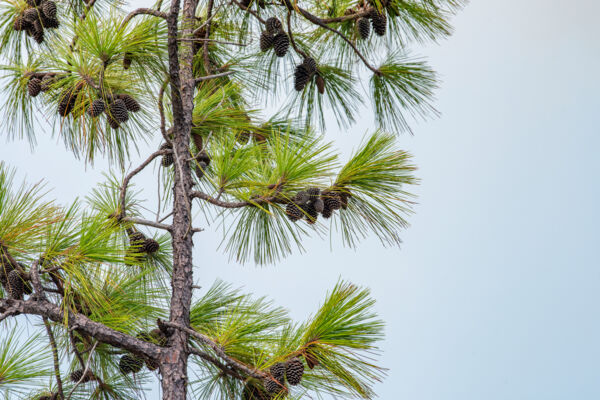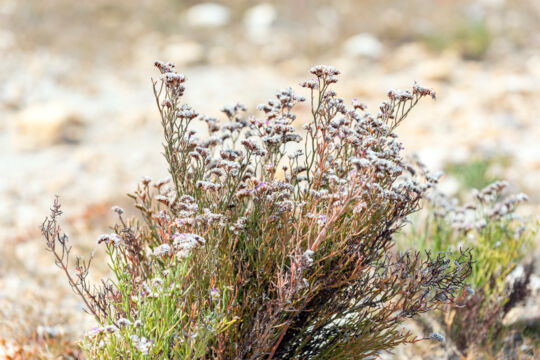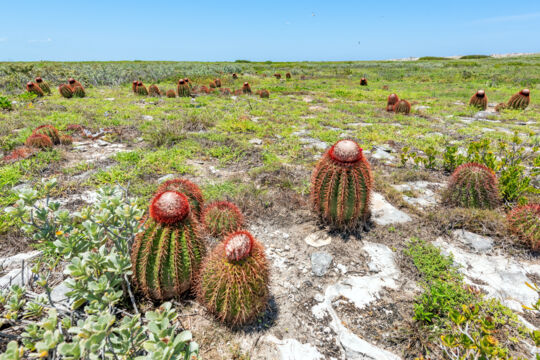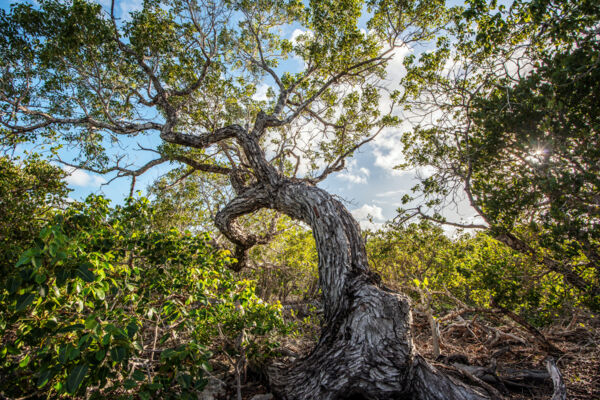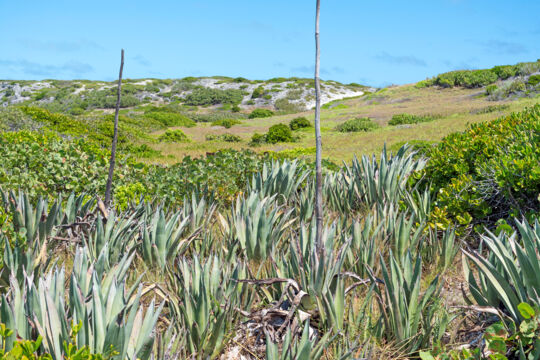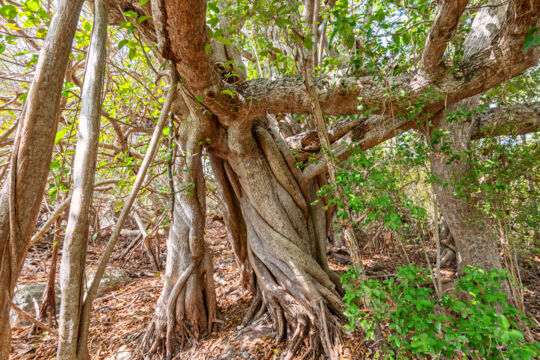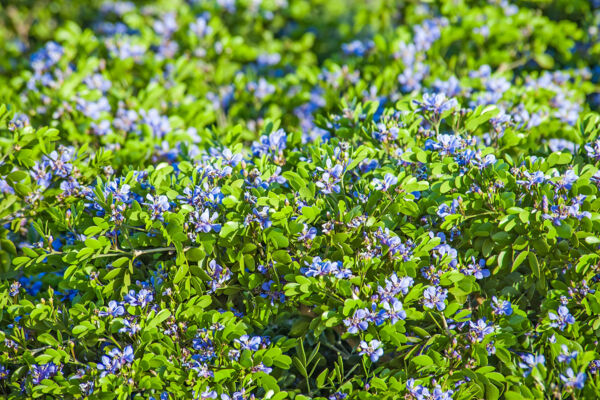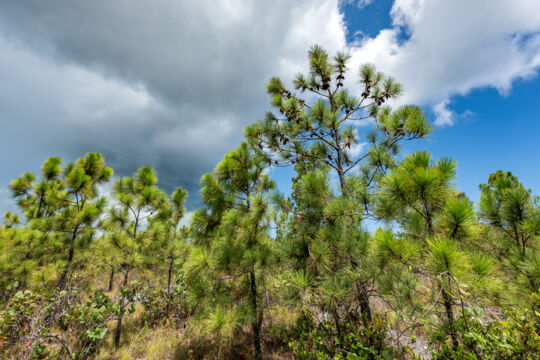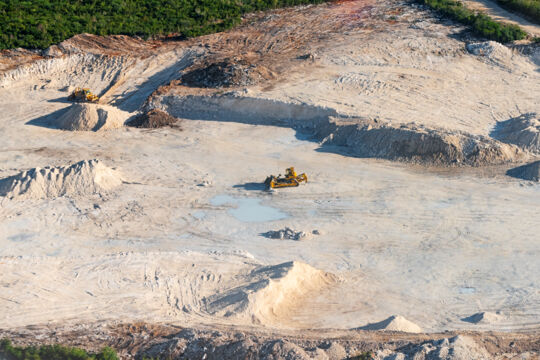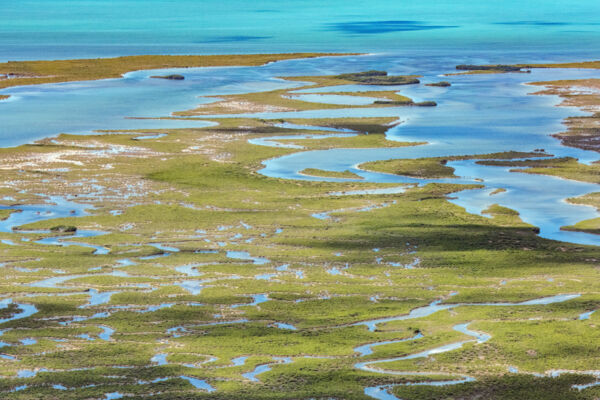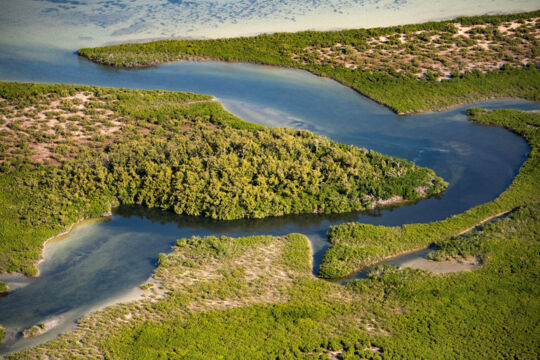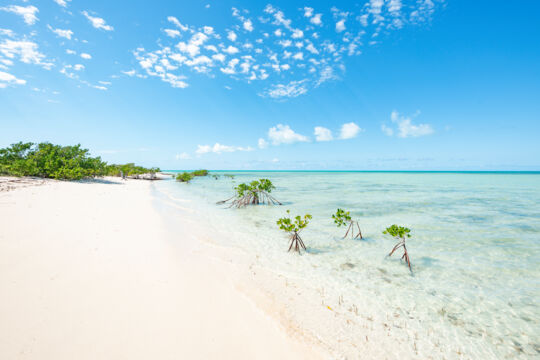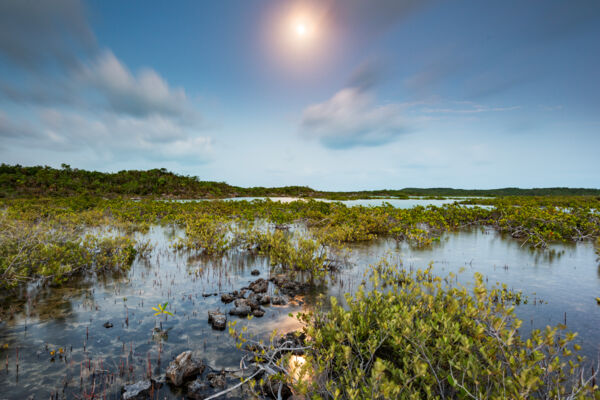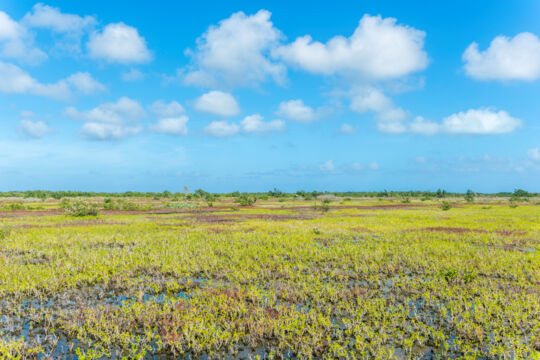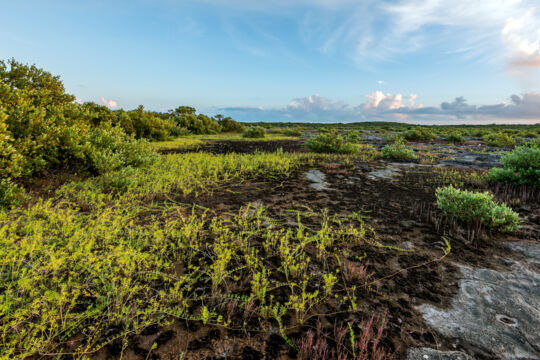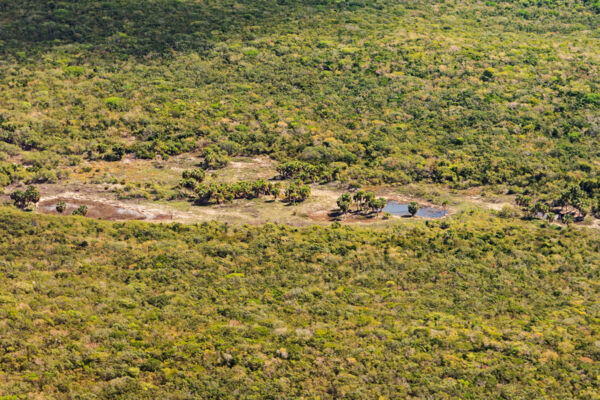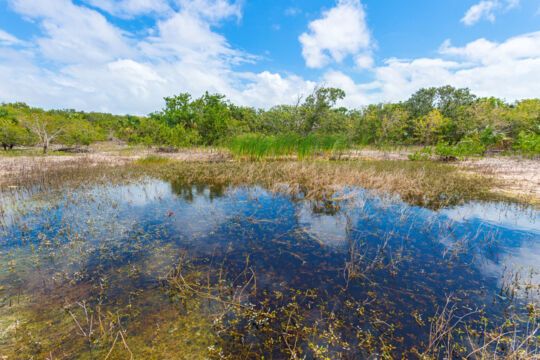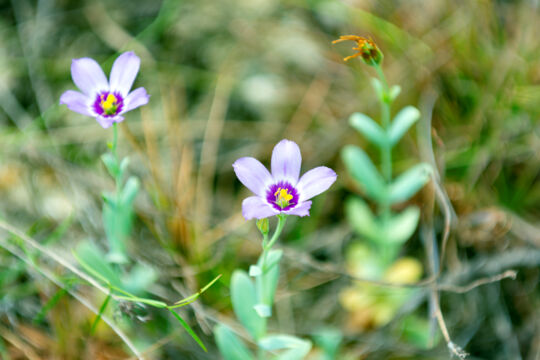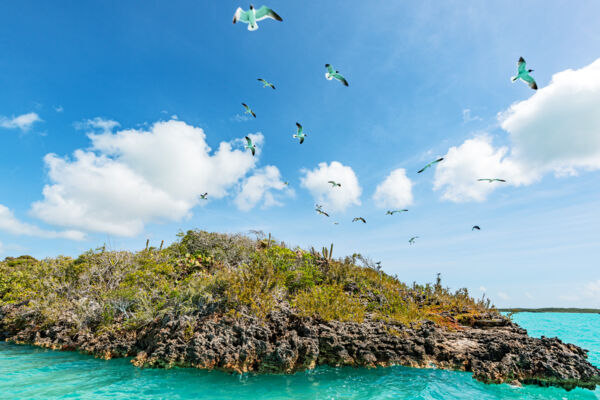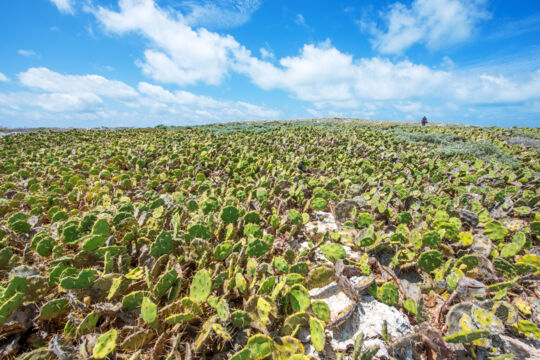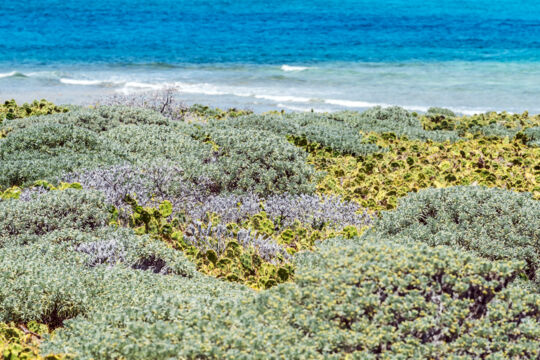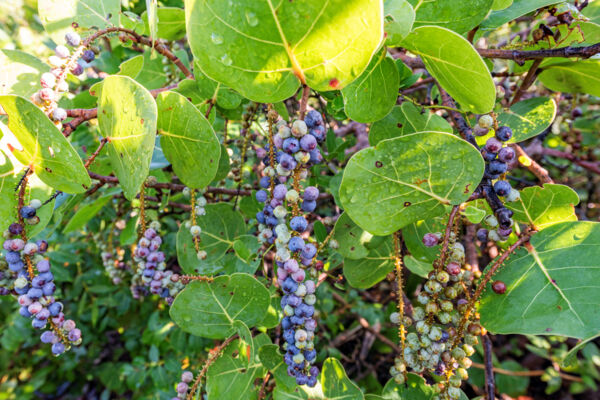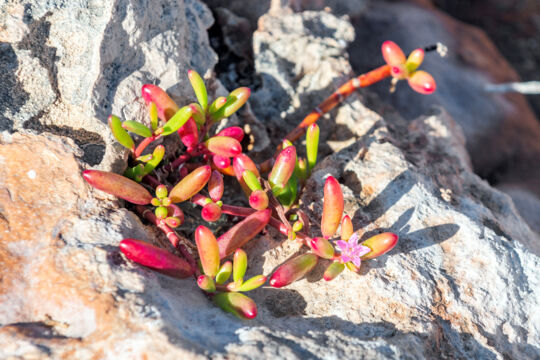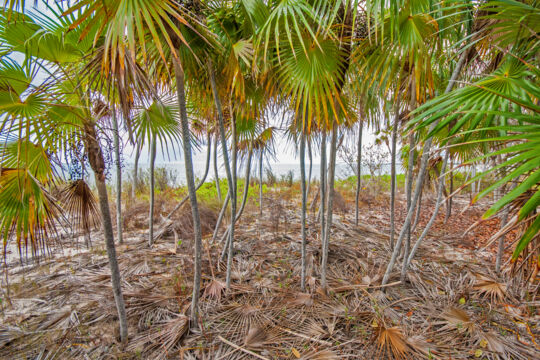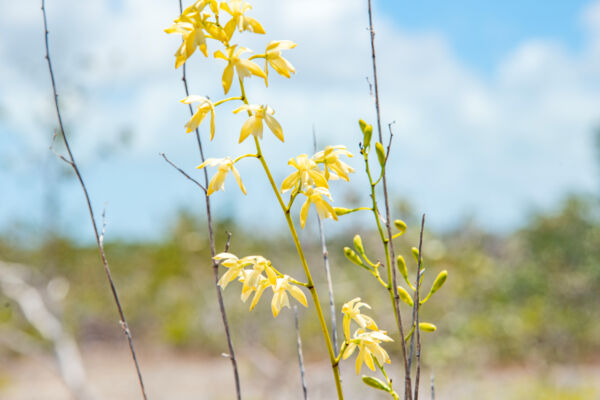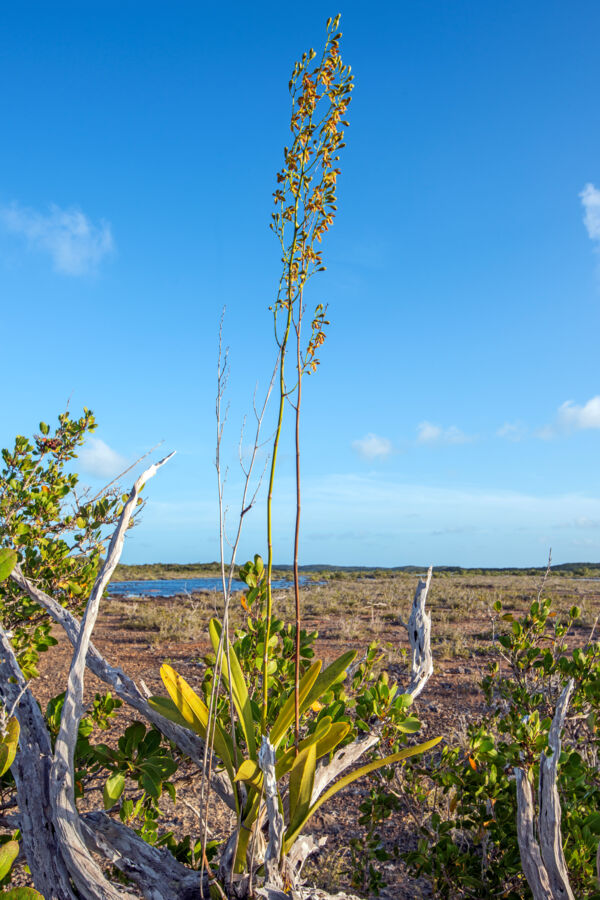Turks and Caicos Flora and Terrestrial Environments
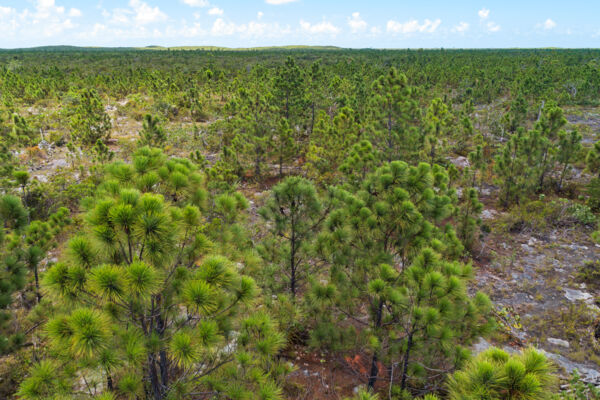
For a very small archipelago nation, the Turks and Caicos has a rich array of terrains and flora. There are nine confirmed endemic plants, and likely more that have not been adequately described. There are also nearly 50 identified near-endemic plants, which the Turks and Caicos only shares with the Bahamas, Hispaniola, or Cuba.
Uninhabited East Caicos is a haven for Turks and Caicos flora, and all nine endemic plants grow on the island.
National Symbols
The Caicos Pine: The National Tree
The national tree of the Turks and Caicos is the Caicos pine (Pinus caribaea var. bahamensis). This tree is a true pine. Unfortunately, it isn’t common in the islands. The invasive Australian pine (commonly known as casuarina) is not a true pine, is far more common, and is often mistaken for the Caicos pine because of its vaguely pine-like appearance.
Turks and Caicos Heather: The National Flower
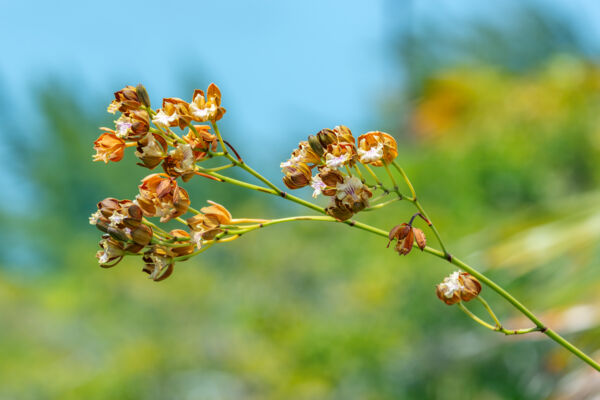
The national flower of the Turks and Caicos is the Turks and Caicos heather (Limonium bahamense). This small plant grows in coastal and salina environments on a few islands, including Middle Caicos, Ambergris Cay, and Salt Cay. The plant was considered to be endemic to the country until a type of heather on Hispaniola was reclassified as Limonium bahamense.
It’s interesting that Turks and Caicos heather was chosen as the national flower rather than one of the islands' orchids, such as the Caicos Encyclia orchid (Encyclia caicensis). This orchid is found only in the Caicos Islands and has a remarkable range of color variations.
The Turk's Head Cacti: The National Plant
The Turk's head cacti (Melocactus intortus) is the national plant, and is broadly represented in local culture. It is on both the Turks and Caicos flag and the coat of arms. This small barrel cacti is found on Middle Caicos, East Caicos, Ambergris Cay, and a few of the smaller uninhabited cays.
| Turks and Caicos Endemic Plants | |
| Bahama broombush | Evolvulus bahamensis |
| Britton’s buttonbush | Spermacoce brittonii |
| Caicos Encyclia orchid | Encyclia caicensis |
| Capillary buttonbush | Spermacoce capillaris |
| Caroline’s rock pink | Stenandrium carolinae |
| Hatpin sedge | Eleocharis bahamensis |
| Lucayan pear cactus | Opuntia x lucayana |
| Slender-stemmed peppergrass | Lepidium filicaule |
Threats to Flora in The Turks and Caicos
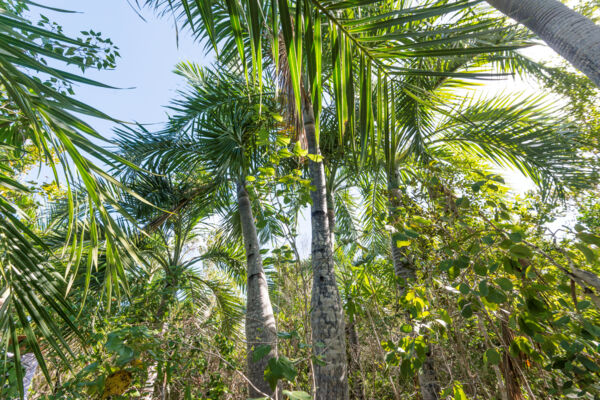
The environment of the Turks and Caicos, both marine and terrestrial, is under significant threat. Native flora in the islands is largely underappreciated, even though the global extent of many of its species is quite limited. An example is the Coccothrinax inaguensis palm, found only in the Turks and Caicos and southern Bahamas. Commonly known as the thatch palm or Inagua silver palm, forests of this resilient little palm are bulldozed in areas such as Grace Bay to make way for development.
Prior to building, a standard practice in the Turks and Caicos is to completely bulldoze and strip clear the entirety of the land parcel. Locally, this is often called ‘cleaning the land’. This results in the complete destruction of all vegetation, only leaving behind crushed limestone.
In most cases, clear-cut bulldozing is prohibited, yet the planning department essentially takes no effort to limit the practice and the Turks and Caicos Government commonly does it itself. During new construction of upscale homes and hotels, developers often completely remove native vegetation and replace it with introduced plants, which typically require more watering and pesticide treatments.
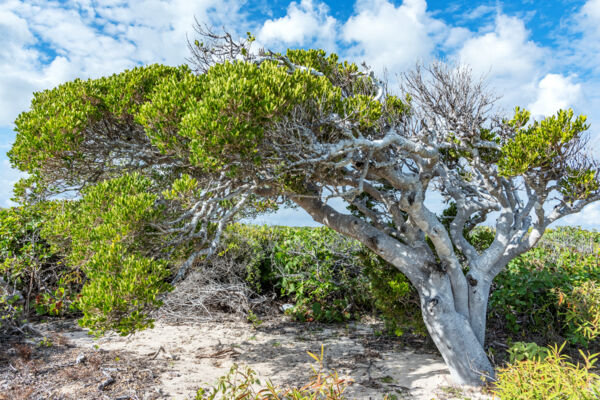
Another threat to endemic and endangered flora in the Turks and Caicos is the lack of enforcement of the relevant laws, such as the National Parks Ordinance. For example, in 2017, palm trees were illegally taken from the Frenchman’s Creek and Pigeon Pond Nature Reserve on Providenciales. Almost the entirety of a distinct and established population of buccaneer palms (Pseudophoenix sargentii ), which represented nearly all of the wild buccaneer palms on Providenciales, were stolen.
The Department of Environment and Coastal Resources (DECR)—the entity primarily tasked with management and oversight of protected areas in the Turks and Caicos—showed little interest in investigating or pursuing the crime, despite the fact that it occurred in a nature reserve and will likely result in the extinction of the tree in the wild on Providenciales.
Some plants in the Turks and Caicos are very susceptible to introduced pests and diseases, including scale and mold. Examples include the Caicos pine, joewood (Jacquinia keyensis), and nakedwood (Thouinia discolor).
Invasive plants are also an issue. Plants such as the Australian pine (casuarina) and cow bush outcompete native vegetation in many situations, and can essentially take over certain environments. Cow bush (Leucaena leucocephala) was likely introduced as animal fodder, and now is the common regrowth species found on roadsides and in cleared spaces.
Was the Turks and Caicos Deforested?
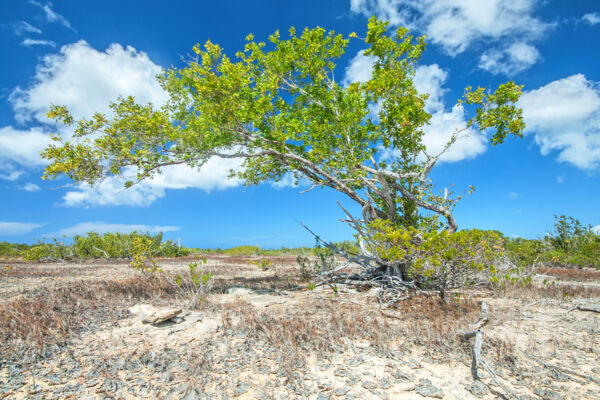
There is ample evidence that logging took place throughout the Turks and Caicos Islands, probably to meet both local and foreign demand for lumber. Exported lumber would likely have been primarily hardwoods, such as lignum vitae, mahogany, and Jesuit bark. There does, however, seem to have been interest in the very lightweight gumbo limbo, for much the same reasons that wood from the balsa tree has been valued.
The height and size of sacred lignum vitae (Guaiacum sanctum) trees in the Turks and Caicos seem to support this theory. These trees grow very slowly, yet are resilient and appear to have very long lifespans. Large lignum vitae are notably absent in the wild in the Turks and Caicos, and are only typically found near old structures (often, these are actually younger trees that have been watered and have less competing vegetation). The large old growth examples also usually have multiple codominant stems, suggesting they were cut down in the past and grew back from a stump.
It's interesting to consider what the landscape and vegetation may have looked like in the Turks and Caicos Islands prior to the arrival of humans. Deforestation almost always leads to soil and moisture loss, so the terrestrial environment may have been quite different in the past. Once prehistoric soils levels are lost, it likely takes thousands of years for the environment to recover.
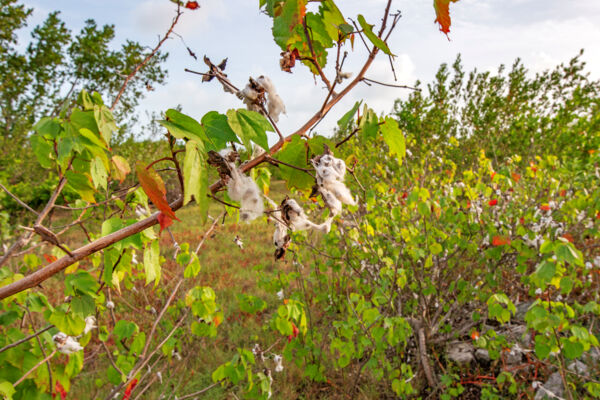
Soil erosion can be quite remarkable in the Turks and Caicos, and is primarily driven via the occasional torrential rain and wind during extended dry periods. While the undisturbed terrestrial environment is quite resistant to these erosion forces, removing vegetation can make it more fragile. Soil erosion was a core cause of the decline of agriculture in the Turks and Caicos, and was in fact a catalyst for the demise of sites such as Cheshire Hall Plantation.
Hints of the islands' vegetative past can be found in the interior valleys near Malcolm’s Road, where occasional ancient stumps from colossal West Indian mahoganies can still be seen, as well as the tropical dry forest on the western side of the central Hog Cay ridge. This area still has some significantly large trees, likely because, historically, it was the single most difficult location to transport lumber from in the country.
The islands in the Turks and Caicos are quite small, and plantations and farming sites once existed on essentially all larger islands, so it’s difficult to judge what soil deposits may have looked like prior to human contact.
The salt islands of Grand Turk, Salt Cay, and South Caicos—as well as islands that saw extensive ranching or sisal planting, such as West Caicos, East Caicos, and Cotton Cay—have likely experienced the most terrain change due to the widespread clearing of native vegetation.
Terrestrial Environments in the Turks and Caicos
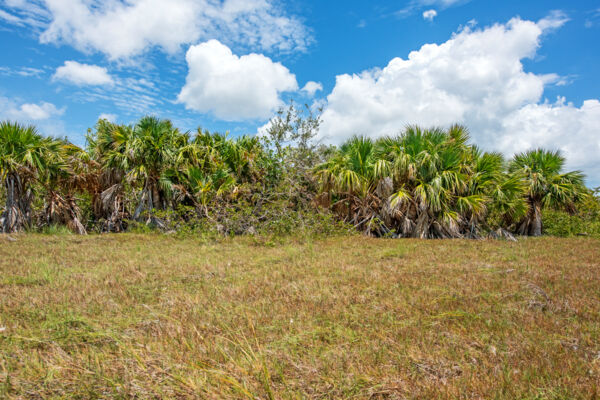
The Turks and Caicos has a number of interesting, unique, and beautiful terrestrial environments. As the archipelago is made up of small islands, much of the landscape is coastal or near-coastal.
Upland Tropical Dry Forest and Thicket
The tropical dry forest and upland thicket biome is common in inland regions of the Turks and Caicos that generally aren't exposed to high levels of salinity. The vegetation height in the tropical dry forest varies a bit, depending on soil depth and water. The tallest tropical dry forests in the Turks and Caicos occur on North Caicos near Kew and southeast of Sandy Point. Trees here can reach around 40 feet (12 m) in height. On Providenciales, Middle Caicos, and East Caicos, these forests reach a maximum of approximately 30 feet (9 m), and about half of that height on the other islands.
Some notable plants in the upland environments include sacred lignum vitae, caper tree (Capparis cynophallophora), wild tamarind (Lysiloma latisiliquum), West Indian mahogany (Swietenia mahagoni ), Bahama strongback (Bourreria ovata), gumbo limbo (Bursera simaruba), and nakedwood (Thouinia discolor). The latter is only found in the Turks and Caicos and the Bahamas.
Open spaces and scrub host plants such as the endemic broombush (Evolvulus bahamensis), a number of different orchids, frangipani (Plumeria obtusa), and the thorny Bahama mimosa (Mimosa bahamensis), which is locally often called cat’s claw.
Intertidal Marine Wetlands
The Turks and Caicos has extensive intertidal marine wetlands, which are typically characterized by very high densities of red mangrove (Rhizophora mangle). In the outer fringes of these systems, nearly all emergent vegetation is the red mangrove, yet as the systems progress inland, more halophytes—plants that can tolerate salt water—appear. Intertidal wetlands make up a significant portion of the southern coasts of North Caicos, Middle Caicos, and East Caicos, much of which is protected under the Ramsar Nature Reserve.
Beyond the red mangroves, there are often black mangroves (Avicennia germinans) and a number of smaller plants. Eventually, marine wetlands transition to salina, buttonwood forest, brackish marsh, and—in some cases where these is an elevation change—rather abruptly to tropical forest or thicket.
Salinas and Flat Ponds
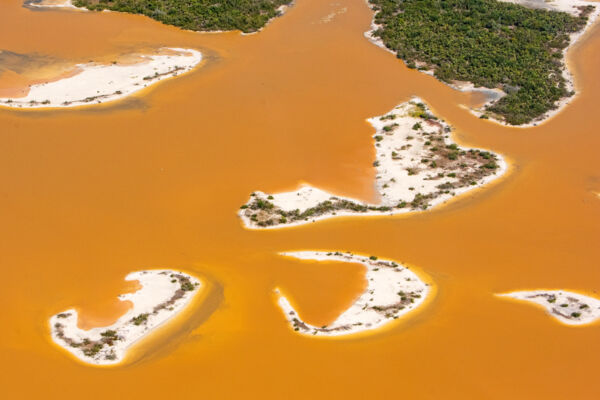
The Turks and Caicos has a significant number of salinas, marine flats, and natural inland saline ponds. The salinity levels, size, and associated vegetation of these areas varies quite a bit. Nearly all islands in the country beyond the small cays have these features. Some are completely landlocked. Others have distant tidal connections to the ocean.
Like the intertidal wetlands, the vegetation near the salinas and salt ponds often comprises halophytes. However, it does not take much of an elevation increase for there to be a change from salina to tropical forest or scrub, at which point plants such as the sea grape (Coccoloba uvifera), thatch palm, and joewood become common.
On the larger islands, the salinas often have buttonwood forests, which exists in isolated clumps or may border the transitional zones leading to other inland environments. The white mangrove (Laguncularia racemosa) and sabal palm (Sabal palmetto) can also be found further in.
Particularly on East Caicos and Middle Caicos, the salinas become open savanna in places, which may have low height ground cover, or simply be bare limestone or silt.
Brackish and Fresh Water Marshes
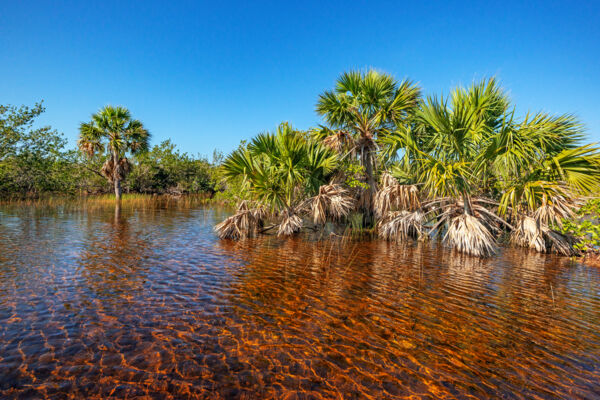
A unique environment in the Turks and Caicos and one that not many people see is the brackish or fresh water marsh. This type of marsh is primarily found on Middle Caicos, North Caicos, and East Caicos, yet also exists to a limited extent on Providenciales, Pine Cay, Parrot Cay, Hog Cay, and Dellis Cay.
The vegetation in these marshes vary. Perhaps the most striking flora is the sabal palm, which is the largest native palm found in the islands. There may also be buccaneer palms, West Indian mahogany, manchineel (Hippomane mancinella), coral sumac (Metopium toxiferum), sawgrass, and even the endemic hatpin sedge (Eleocharis bahamensis), a small plant found only in the Turks and Caicos and the southern Bahamas.
Coastal Environments
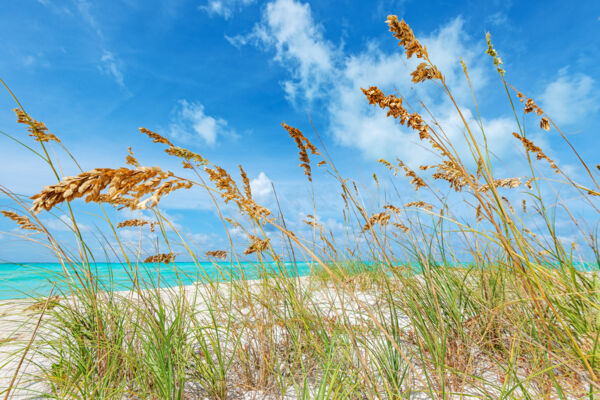
The Turks and Caicos has a number of unique coastal terrains. The flora here varies based on substrate, elevation, wind exposure, and surf exposure. Sandy lee coasts often feature a dune with vegetation such as sea oats, bay tansy (Ambrosia hispida), and bay cedar (Suriana maritima).
In both very sheltered sandy environments and on the striking exposed limestone of the ironshore terrain, sea purslane (Sesuvium portulacastrum) ground cover is common. Sea purslane is one of the few edible plants that can easily be found in the Turks and Caicos Islands.
At higher elevations along limestone coastlines, you can find candlewood (Gochnatia ilicifolia), sea grapes, joewood, and mosquito bush (Strumpfia maritima).
Coastal dune planes can include plants such as the thatch palm, which is the most common palm in the country, as well as yellow alder (Turnera ulmifolia), sea sage (Lantana involucrata), seven-year apple (Casasia clusiifolia), and coral sumac.
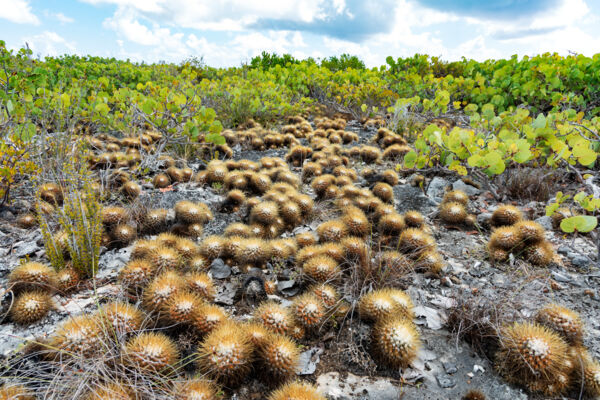
On some of the small isolated cays, there are dense patches of pear cactus. This may be the reason why these islands support colonies of the Turks and Caicos Islands Rock Iguana—an omnivore that feeds on cactus.
A discussion of coastal vegetation in the Turks and Caicos unfortunately should include mention of the invasive Australian pine. This tree has several common local names, including casuarina, cedar, and 'she oak'. It is often the tallest tree around and is common on lee sandy beaches. There may be just one or a few trees on a beach, or there can be a dense and narrow band of forest, which is often found above the first dune. The trees often stifle out competition, essentially removing food resources for a range of native fauna.
On windward beach coastlines, it’s also common to spot some non-native plants such as the mahoe (Hibiscus tiliaceus), Geiger tree (Cordia sebestena), and sometimes the coconut palm, which grow where their seeds wash up, typically near the upper reaches of the wrack line.
Pine Yard
Pine yard is the local name for the setting where Caicos pine grows. This term describes one of two distinctly different environments: rock pine yard and sandy pine yard. Both are low elevation and low salinity. Rock pine yard is found on Middle Caicos, and is the inland, low-elevation plain found between the expansive southern salinas and the upland forest. The terrain has exposed limestone and interspersed shallow pockets of soil. North Caicos once had an extensive rock pine yard, but Pine tortoise scale killed nearly all the trees. Sandy pine yard is found solely on Pine Cay, and is an inland coastal dune plain.
The Caicos Pine Yard Trail is the best place to see the national tree.

